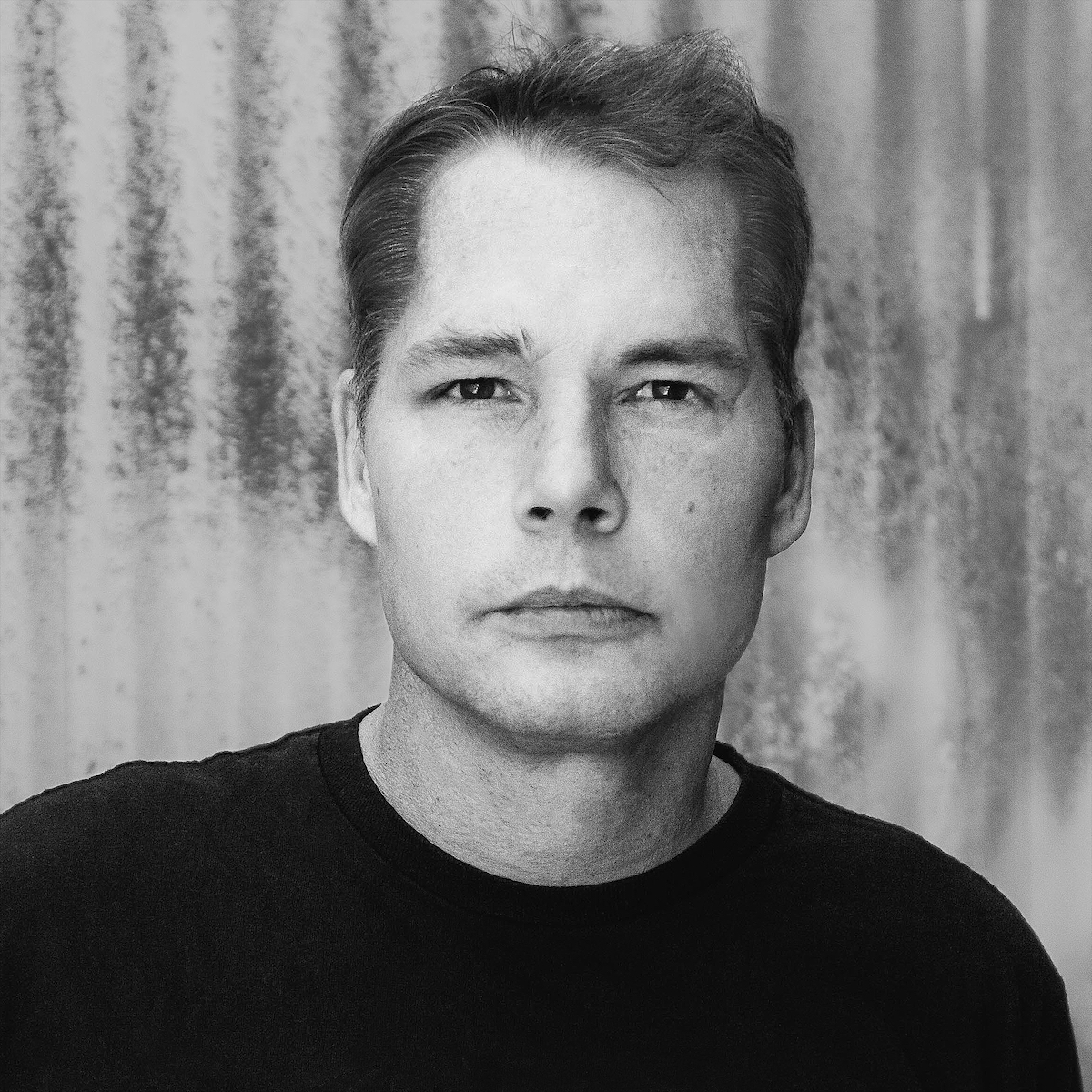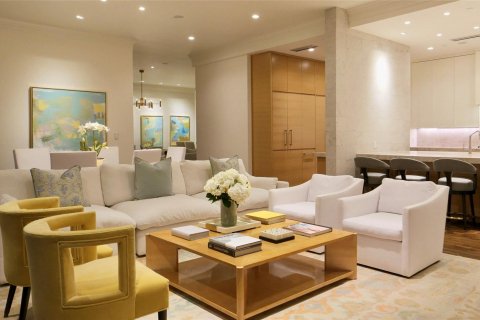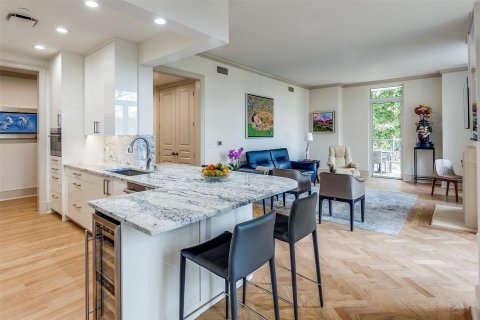
Shepard Fairey (2019)
It wouldn’t be a Shepard Fairey if it didn’t disrupt your reality and leave you questioning everything. Since emerging on the scene more than 30 years ago — with his 1989 “Andre the Giant Has a Posse” sticker campaign — Fairey has continuously found himself at the pulse of American culture. While he’s shifted from delinquent street tagger to championed artist and storyteller, the same touchy subjects ignite his work: political corruption, human rights, and environmental turmoil, to name a few. His current exhibition at the Dallas Contemporary, “Shepard Fairey: Backward Forward” (through March 19, 2023), forces visitors to face head-on the weight of their choices and ask themselves: Are we moving forward or backward?
On exhibit are his 2017 mixed media on canvas Defend Dignity, which presents a heroic image of Maribel Valdez Gonzalez, a Texas teacher of Mexican descent, alongside anti-immigration propaganda, and his less accusatory 2021 AR-15 Lily, inspired by the Vietnam War protestors who put flowers in the gun barrels of the National Guard.
While taking us through the trajectory of his career, the exhibition also explores the trajectory of America, giving Fairey’s present concerns about our country’s direction a greater sense of urgency. “Backward Forward” pulls us out of our one-track trance and invites us to think about how we can evolve into a society that cares about the greater good.
Ahead of his first solo exhibition in Texas, PaperCity Dallas dialogs with Shepard Fairey.

Tell us about the title, Backward Forward.
SF: I’ve always considered myself progressive. In many ways, I’d consider the United States progressive, as a country founded on democracy and continuously evolved to improve equality, even if sometimes against resistance. Since the time of Reagan, but especially since the rise of Trump, there seems to be a nostalgia looking back to a supposedly better time that, in my opinion, was not better, especially for anyone who is not a wealthy straight white male. A lot of the current social and political trends I see as regressive, not progressive — hence, “Backward Forward.” The title is meant to be evocative, but it is also very literal in the sense that these ideas that I think are outdated are being pushed as the way forward by politicians and social movements that used to be fringe but have entered the mainstream. I hope the show title makes people think about how they define progress.
The works in the exhibition were created at different times in your life —2017, 2020, and some this year. What is the unifying thread?
SF: The country’s been facing many of the same challenges for decades, but especially since the rise of Trump my consistent concerns have been exacerbated. Tribalism, including racism, sexism, xenophobia, Islamaphobia, environmental irresponsibility, denial of fact and science, suppression of democracy, abuse of power, and gun violence have all intensified during the time frame of the works in this show. I respond to what’s going on in the news cycle more as a connection to pervasive systemic issues rather than purely trying to take part in a short-term conversation.
Your art is often driven by political and social issues. What recent news has impacted you?
SF: The pervasive voter-suppression laws being pushed in different states around the nation, the extreme weather events fueled by climate change, the many mass shootings, and the election campaigns of candidates who push the lie that Trump won the 2020 election.
How has your approach to art changed in recent years?
SF: The most dramatic change in my art philosophically is that I’ve shifted from making predominantly confrontational or agitational pieces to making more appealing and universal images that draw people into a challenging conversation without being as accusatory or divisive. My social perspective is the same, but my strategy has evolved. I’ve expanded my color palette to include shades of blue rather than just the more aggressive red, black, gold, and cream.
My creative process varies from image to image. Sometimes I’m inspired by a song lyric, and sometimes I see something inspiring; sometimes, I think about a specific message or idea I want to convey and then go look for the right symbols and images to compose; sometimes, the pieces include a few or all those approaches. I’m constantly jotting down ideas and creating images that may be useful immediately or at a later point, but I know they will have value some time, somewhere. I often work in a modular way, experimenting with portraiture, typography, patterns, symbols, etc., to create a layered composition with the ideal image, message, and aesthetics hierarchy.
From a technical standpoint, I work back and forth between analog and digital techniques. I make my illustrations by hand, then scan them and develop compositions usually in the program Illustrator. When I’ve composed a digital sketch I’m pleased with, I work in my art studio making stencils, screens, and collage backgrounds with the flexibility to improvise from my sketch and create a lot more depth with layers of collage and subtleties of monoprinting and stenciling. I’ve used all these techniques for years but have been refined and combined in much more sophisticated ways in recent years.
Why do you believe the people of Texas, and specifically the people of Dallas, need to see this work?
SF: Texas is a state with a wide array of businesses and political beliefs, but it seems to be dominated by a few very wealthy conservatives when it comes to governance. I want to share my ideas with every Texan, especially those who want to see democracy work well for everyone and care about their fellow citizens, not just themselves.
What’s next for you?
SF: After four sizable shows in 2022, I need some time to recharge and work on new pieces with some space to experiment. I sometimes can thrive under the pressure of deadlines, but I’m a lot less stressed when I have breathing room to experiment, fail, and keep trying until I make a breakthrough without a firm deadline.





































